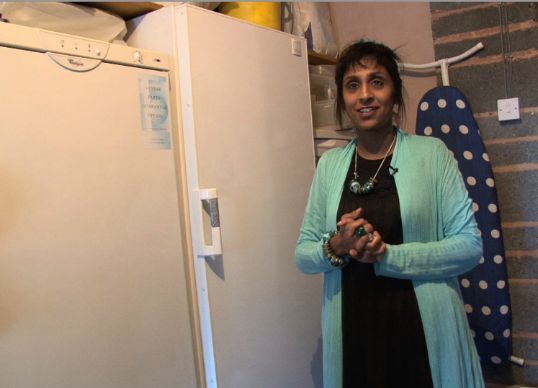New research reveals extreme measures some Brits take to squeeze into their homes and highlights what people really want and need from their homes.
The vacuum cleaner stored at Mum’s house a 20 minute drive away; BOGOF supermarket food deals kept in the boot of the car; these are just two of the real-life examples of how some British households are constrained by the design of their homes.
More storage space is one of eight key features that people need when choosing a home as revealed in a new Ipsos MORI research report published today for the Royal Institute of British Architects (RIBA).
The RIBA Ipsos MORI report ‘The Way we live now: What people need and expect from their homes’ is a ground-breaking piece of research that provides the only national evidence base setting out how people are using their homes now, what they look for when choosing a home and what they think needs to happen to improve the home-buying experience. The report, the first of its kind for over 50 years, will be used as evidence by the Future Homes Commission, a national inquiry that is currently developing recommendations for how houses should be designed and delivered in future. It will provide policy makers, house designers and builders much-needed consumer evidence to ensure that new homes are good quality and fit for modern households.
The eight key features that people need and want from their homes today, as revealed by the RIBA/Ipsos MORI report, are:
- Long-term and short-term storage for functional items, and for personal possessions people have chosen to keep during their lives
- Dedicated space for domestic utility tasks, such as vacuum cleaners, washing, drying and ironing clothes as well as storing rubbish and recycling
- Large windows for natural light, large rooms and high ceilings – these are typically referred to as ‘period features’. A ‘sense of space’ is vital to people’s wellbeing, and expectations of a new home are often shaped by the homes we have lived in previously.
- Large main living area – for social functions such as eating and entertaining and relaxing. People typically prefer to have an element of open-plan layout to accommodate entertaining friends or family, regardless of age or lifestyle.
- Layouts which take into account technology used within the home – we want our homes to have enough sockets and storage for technology to enable us to arrange furniture and rooms in different layouts.
- Space for private time away from other members of the household – across all age groups, and especially where generations live together, private space makes an important contribution to our sense of wellbeing within our homes. Noise reduction within and between households is also essential.
- Private space outside or access to green public space in urban locations – this is important for wellbeing for all, and particularly crucial for families; parents like a safe place for children to play outside.
- Options for different home layouts. Despite some universal needs such as flexible space to entertain and socialise, there were different needs and expectations according to the life stage or the size and age of households and families, which meant that there was no single, standard layout that would cater for all people.
People find it challenging choosing a home and find it difficult to understand and compare space between homes. Emotional considerations – such as the ‘feel’ of a home – and the desperation to get on the housing ladder can overrule practical considerations such as ‘where can I store the vacuum cleaner?’ or ‘where will the rubbish bin go?’
Through this research, it is revealed that consumers would like the following improvements to the home buying experience:
- An independent, cross-professional body to regulate the quality of, and provide free information about new-build homes
The quality of new homes – the quality of building materials, fixtures and fittings (including noise reduction and energy efficiency) – is the biggest concern. People also feel the bedrooms in many new homes are too small and want to see size regulation for rooms in new homes.
- Free information to help homebuyers compare issues such as noise, light, safety and environmental performance
Consumers lack trust in estate agents and home builders to provide accurate information, and concluded that this improvement would be most appropriately delivered by an independent third party.
Harry Rich, RIBA Chief Executive said: “It has been over half a century since a government-tasked committee researched how households live, yet the size and designs of homes being built now are still defined by that great but out-of-date report – from a time when we had sewing boxes in our living rooms and indoor toilets needed regulating.
“Until today there has been no evidence base that sets out how we are living now and what we want from our homes. This new research provides important evidence on which we can base some changes to the way our homes are designed, delivered, marketed and sold to us.”
Chief Executive of Ipsos MORI, Ben Page said: “The research graphically shows just how cramped and poorly planned much of our housing is today, and the extraordinary lengths people go to cope with it. RIBA is absolutely right to draw attention to it”
